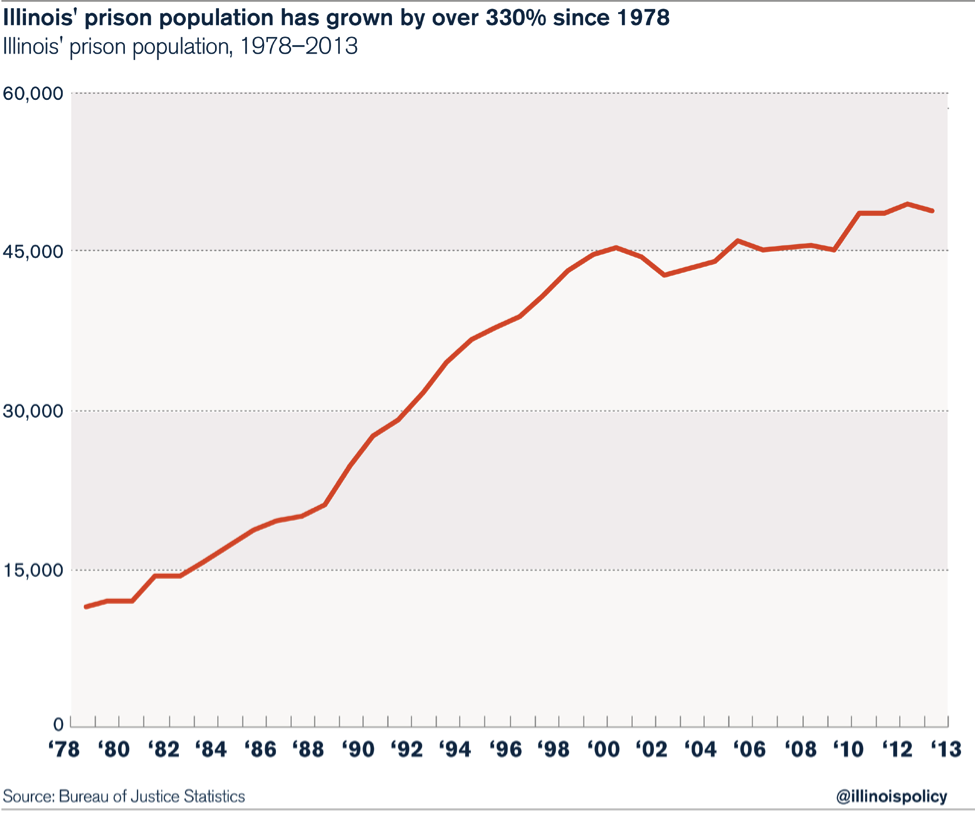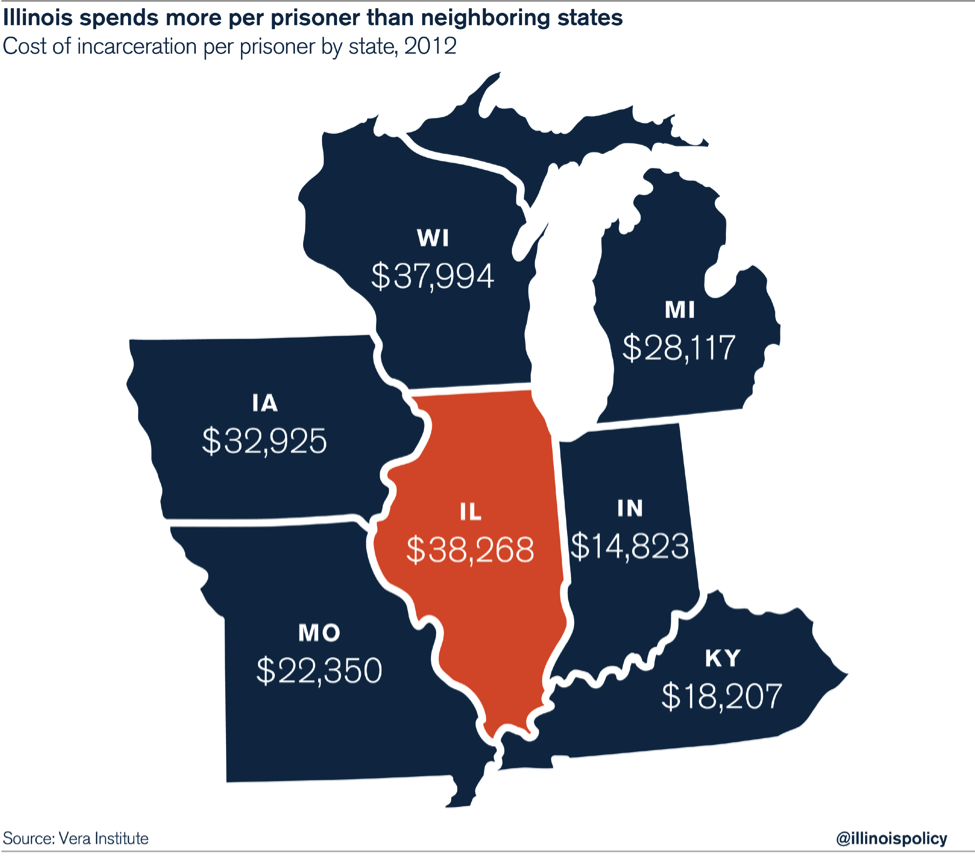Crowded house: Illinois’ costly prison problem
Illinois spends $1.4 billion a year on overcrowded state prisons. Can the state get more for less?
For all the money put into corrections, are Illinois taxpayers getting much of a return on their investment?
Illinois operates 25 adult correctional facilities that are only supposed to hold 32,075 inmates. But Illinois prisons are severely overcrowded, holding 48,887 inmates at the end of fiscal year 2013. This means state prisons are operating at nearly 150 percent capacity.
This is not a recent development. Illinois’ prison population has been on a sharp and steady upward trend for decades, increasing more than sevenfold since the mid-1970s.
Without serious changes, these increases are expected to continue. The Illinois Sentencing Policy Advisory Council, or SPAC, estimates the state prison population will increase by 6,573 inmates over the next 10 years to reach a total of 55,450, based on Illinois Department of Corrections, or IDOC, data.
Illinois’ financial insolvency – including a $111 billion unfunded pension liability – means spending millions constructing and operating more prisons is not a feasible solution for overcrowding.
The root of the growth in Illinois’ prison population can be attributed to a growth in prison admissions, reduced sentencing credit, increased length of prison sentences and a consistently high rate of recidivism, or the percentage of the population that returns to prison after being released. All this has led to Illinois leading the Midwest – and much of the country – in expenditures per inmate.
The Illinois Department of Corrections, or IDOC, directly pays about $21,600 per inmate, largely from the general funds budget. But when costs falling outside of the system – including employee healthcare, employee benefits, pensions and capital expenses – are factored in, the total rises to $38,268 per inmate according the Vera Institute, a nonpartisan criminal-justice research foundation.
In fact, nearly one-third of the cost of corrections in Illinois actually comes from spending outside of the IDOC budget. Of the 40 states included in the Vera Institute’s 2012 study of corrections costs that fall outside of the system, only Connecticut had more corrections expenses fall outside of its state-level prison budget.
And when nearly half of Illinois’ prison population is made up of nonviolent offenders, it’s worth asking – is incarceration the most cost-effective way to address nonviolent crime? Nonviolent drug offenders, for example, would benefit from alternative drug-treatment programs that are much less expensive than prison, and directly treat the root causes of crime. The cost of these interventions, through programs such as Adult Redeploy, for example, only cost about $4,400 per person.
Other states are proving it’s possible to reduce the prison population and crime rates at the same time. Illinois’ upward trend in costs will continue until it makes the policy changes necessary to do the same.


